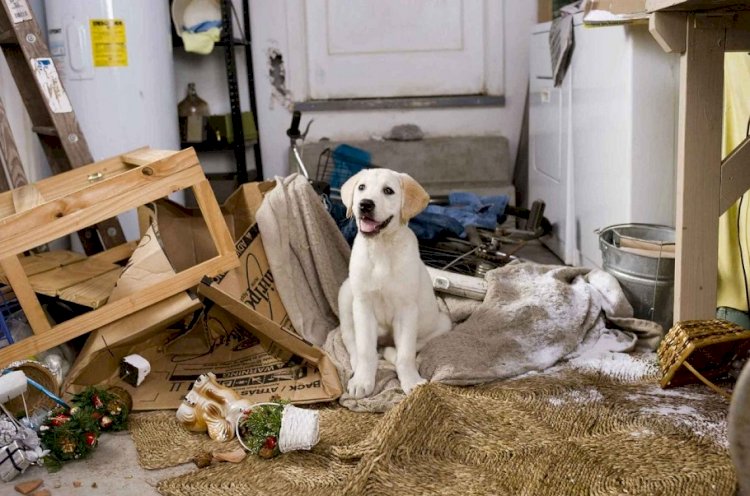How to prevent destructive Chewing
In this article you will learn how to prevent destructive Chewing with no headaches involved.

Dogs chew. Chewing is one way a dog learns about his world, and most dogs will chew on just about anything to learn about their environment and their role in that environment. Chewing behavior is an expression of a dog's normal behavioral repertoire, but inappropriate or destructive chewing is pretty much a mismanagement problem. Intervention can be highly successful, but the owner must commit to teach the dog what is and what is not an acceptable chew toy.
HOW TO MANAGE INAPPROPRIATE CHEWING
Keep valuables and personal belongings out of your dog's reach. If you don't want your dog chewing on certain items, like the remote control, don't leave the remote control lying on a coffee table. Socks, shoes, books, magazines, eyeglasses, cell phones, children's toys, wallets, and underwear all seem to have a magnetic allure to the canine mind. Put everything away in a drawer or basket, plastic bin, or closed cupboard. Do not offer your dog an old shoe for a toy and then expect him to differentiate between the ancient sneaker and the brand-new leather loafer. Also, be realistic in your expectations. A dog is going to be a dog and chew up something he shouldn't.
When that happens, interrupt the behavior and offer something more acceptable. Never scold a dog for chewing, especially if you haven't caught him in the act.
Mitigate your dog's need for inappropriate or destructive chewing by giving him more opportunities for mental stimulation. Set up a mini agility course in the house or yard using large boxes for tunnels and pool "noodles" for jumps. Give him interactive toys that hold treats inside, or give him toys meant for determined, active chewers. Teach him to retrieve a thrown toy, but do this on leash at first so your dog won't get the idea that he can munch on the item. Reel him back toward you, encouraging him all the way, and then throw the toy again.
If your dog is determined to chew up the deck rails or fence posts or kitchen table, spray them liberally with a bitter-tasting substance or cover them in aluminum foil or double-sided tape. These tactics might deter some dogs until they grow up, mature, and don't feel the need to chew.
PUPPIES AND CHEWING
Chewing is a natural behavior for puppies, and they are going to chew especially while teething. It's a fact of life. Teething stimulates an uncontrollable urge to chew as a means of relieving some of the discomfort and as a way to facilitate the removal of their baby teeth. Few owners escape puppy rearing without losing a pair of shoes, a few magazines, or a potted plant.
The key to minimizing destruction and preventing bad habits is management. To foster good habits and minimize destructive behaviors, follow these simple guidelines:
Before bringing your new puppy home, plan ahead. Have an exercise pen or play pen and a crate ready. Do not wait until you decide you need them.
When you cannot keep a constant watch on your puppy, keep him confined in an exercise pen, playpen, crate, or puppy-proofed area with his favorite chew toy. This includes when you need to jump in the shower for five minutes, while you are making dinner, or when you dash outside for two seconds to move the sprinkler.
Once your puppy arrives at your home, know where he is and what he is doing at all times. You would not dream of taking your eyes off a toddler, and you should never take your eyes off a puppy when he is not safely confined.
Puppy-proof your home. Puppies are ingenious when it comes to finding items on which to chew. Pick up anything and everything your puppy is likely to put in his mouth including shoes, purses, jackets, schoolbooks, candles, rugs, electrical cords, dolls, and so forth. Make sure that your puppy receives plenty of exercise each day. Puppies and adult dogs require daily physical and mental stimulation. Lacking appropriate and adequate exercise, they will frequently release excess energy by chewing.
Until your puppy is reliably trained, never give him free run of the house. It is impossible to arbitrarily put an age on when a puppy is reliably trained. Some puppies have a stronger desire to chew than others. A general guideline is about one year of age. Much will depend on how conscientious and committed you are to managing your puppy's environment, instilling good behaviors, and discouraging unwanted behaviors.
As your puppy grows and matures, his desire to chew will diminish. It is important, however, to continue giving him appropriate chew toys throughout his life to exercise his jaws, keep his teeth clean, satisfy his natural desire to chew, and entertain him for a few hours.
A variety of chew toys available in all sizes and shapes will entertain your puppy or adult dog for an hour or two, satisfying his need to gnaw on something while diverting him from chewing on inappropriate items. Avoid toys or bones that are too hard and may crack your dog's teeth, as well as ones that are too small or break apart and present choking hazards. Always be sure to match the chew toy to your dog's size and chewing strength, keep an eye on your dog when he's chewing to make sure large pieces aren't being chewed off and swallowed, and take worn or chewed-through bones and toys away from your dog promptly and replace them with new ones.
SOURCES
[1] "Nylabone"
[2] "Positively"
[3] "Pet Place"
[4] "Pet Education"
[5] "Green Acres"
[6] "The Kennel Club"
[7] "Dog Conspiracy"






















